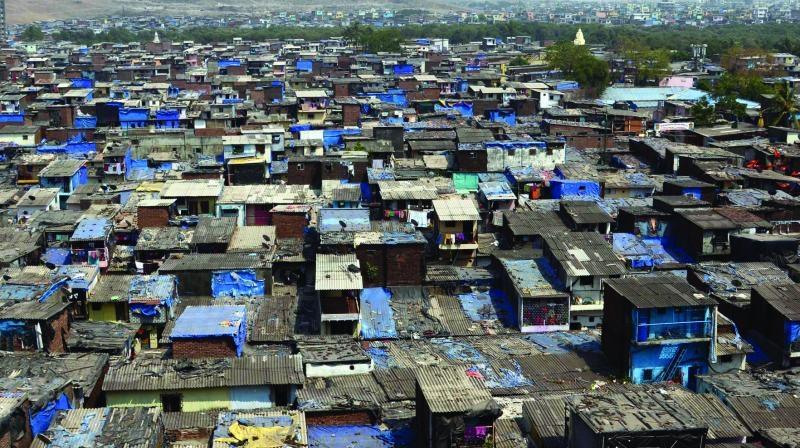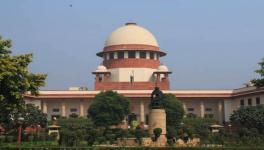The Systemic Failure of City Administrations

In one of the seminars in which I participated, in Delhi, on disaster risk reduction (DRR), I had stated that the foremost town planner in the country is the Supreme Court (SC) of India. This has been substantiated by the intervention of the courts, especially the SC, in matters related to the city governance. The recent comment made by the judges of the apex court, that “Mumbai is sinking and Delhi is stinking; where’s the government?”, explains the grim picture of our two important cities. The condition in other cities of the country is even worse, and more precarious than Mumbai and Delhi. Varanasi, the city represented by Modi, the PM, is termed as one of the dirtiest cities of the North.
The SC, on July 12, reprimanded the lieutenant governor of Delhi for projecting himself as a superman, but passing the onus to someone else when he is questioned. This was in reference to the garbage disposal in the national capital.
Also Read: Delhi’s Garbage Politics
In similar interventions, the Himachal Pradesh High Court virtually metamorphosed into the civic body of the Shimla city, to ensure that water is distributed adequately during the summer months. The Chief Justice of HP high court was seen visiting the water control room himself, and magistrates were assigned the task to ensure that proper water distribution takes place.
The citizens of Delhi, just recently, were forced to knock the doors of the court to ensure that 17,000 trees are protected from felling for a housing project in Sarojini Nagar.
So, does it mean that the cities will have to be governed by the courts, and that too, the apex court of the land? Will the courts have to take the initiative for effective delivery of services to the citizens in the cities?
Why are we witnessing such pro-active intervention of the judiciary? Except in Jammu & Kashmir (where the elections to the local bodies have not been held in the recent past) almost all the other states have local body
administrations. This comprises elected council, mayor/president etc. Why is it that the local bodies, which were supposed to responsibly manage the cities as per the 74th constitutional amendment, have failed to perform their duties?
The overstepping of the judiciary cannot be ridiculed as the city councils have actually failed to deliver!
Also Read: Increasing Carbon Emission and Sustainable Development
The 74th constitutional amendment was considered to be a milestone for urban governance. In fact, 2018 happens to be the silver jubilee of the 74th amendment. But 25 years have shown that the cities were not developed enough, and the central and state governments actually controlled them through their representatives – the bureaucracy. The NITI Aayog has admitted the failure to implement the provisions of the aforesaid amendment. In a few states like West Bengal, Kerala, and Madhya Pradesh, the mayor in council takes the decisions. In the rest of the country, the real authority is with the state government-appointed bureaucrats.
While reviewing the 74th constitutional amendment in the year 2012-13 through a task force headed by KC Sivaramakrishnan (former secretary of MOUD), of which I was also a member, the task force had castigated the non-devolution of powers and had strongly recommended financial devolution. The task force had also recommended that the planning of the cities be handed over to the city administration, instead of parastatals, or other bodies like the greater development authorities, which are never answerable to the people.
Also Read: Plastic Pollution in India
The neo liberal reforms have further incapacitated the city governments. The cities not just contribute to over 70 per cent of India’s GDP, but also to the 90 per cent of the total revenue collection of the government. Nearly one third of the country now lives in the cities, and the pace of urbanisation is rapid. The neo liberal paradigm of governance has been highly perilous for city managements, which have been effected in various ways.
Firstly, the large number of municipal cadres and workforce have been reduced substantially, invariably in all the cities across the country. The hardest hit areas have been water supply and distribution, sanitation, maintenance of infrastructure and such other utilities. The BJP government at the centre has introduced flagship programmes like Swach Bharat Mission (SBM), Atal Mission for Rejuvenation and Urban Transformation (AMRUT) and the Smart city plan, but all of them have fallen to the ground. The SBM is an utter failure. The human resource that was employed to clean the cities in the past has been substantially reduced by over 50 per cent in the post 1990s period. Simultaneously, because of the centralised planning, a ‘one size fits all’ solution was prescribed, which failed miserably.
The SC had to comment on the Gazipur dumping site in Delhi, when it reached a just few meters short of the Qutub Minar height. What an astounding feat the SBM has achieved in the past few years, especially in the national capital!
Secondly, the financial capacity of the cities has been robbed, and through the centralisation of the taxes, the cities became mere adjuncts of the respective state governments. The cities are motivated through foreign and national, big business-funded consultants to move for more user-fee utilities and preferably to outsource them. One of the reasons for the present mess in the solid waste management in the cities is that in almost all the cities, the garbage collection, and its treatment, has been outsourced. The city sanitation plans (CSPs) of the cities, were made by international consultants, some of whom had no connection with the ground realities, and once the plan reached the implementation stage, they ran away, leaving the city in a tizzy.
Thirdly, instead of enhancing the capacities of the cities with multi-stakeholders participation, the new model of governance is that of the public-private partnership (PPP). The new model of smart cities alienates the cities further from the elected bodies. The special purpose vehicles (SPVs), formed in the smart cities are registered under the companies act. The cities’ elected administrations are completely aloof from this structure, whereas the investments in the cities have been rooted through this model. The SPV mainly comprises of bureaucrats and other technical staff. It is not even answerable to the elected council. Some of the commentators have termed the formation of SPVs as synonymous to writing the obituary of the 74th constitutional amendment.
Fourthly, the plans of the cities, called the ‘master plans’ or the 'development plans’, are mainly just land use plans, without the overall urbanisation being taken into consideration. The master plans are mainly concerned about the floor area ratio (FAR), or the Floor Space Index (FSI) as termed in some states. This is nothing more than the land use plan. The working of city transport, service utilities, sanitation etc. hardly find any mention in the master plans. Above all, never have these plans been inclusive. One can look at the Delhi master plan and its implementation, for a clearer picture. Though the Delhi master plan did mention social housing, but the fact remains that in Delhi, the housing projects developed by the DDA, have been 80 per cent for the middle and upper-middle classes, and just 20 per cent for the poorer sections. These plans for the cities have never (with a few exceptions) been prepared by the cities. Rather, development agencies or authorities have been assigned the responsibility to prepare them.
Also Read: What Makes A City ‘Smart’?
Hence, in such conditions, the city, which is a live dynamic unit of public life, is turning into a nightmare for its residents. It’s not a big surprise that nearly 40 per cent of the people in tier I cities, and 60 per cent of the people in tier II cities, live in slums. There is no plan for them. Only contingency plans work for such areas. Their life and movement is controlled by spontaneity.
In these situations, the courts intervene, but with a middle class or upper-middle class lens, not realising that it is a systemic failure. The courts want the cities to be clean, but the ‘city cleaners’ are being thrown out of the cities, being uprooted from their hutments. This is a paradox which no court order can normalise. John Closs, the former chairperson of UN Habitat III stated, “We have to go back to the basics of planning in the cities, which has to be inclusive and the three decades of laissez faire must be given away”.
There definitely some glaring examples of good practices being adopted. But these are exceptions, and not generalisations. What we require is proper methodological changes to adapt to the cities. And without going back to the basics, no substantial change can be achieved. What is required is a more decentralised approach of governance, where the people participate and have a ‘right to the city’. This right must be not only for material utilities like water, sanitation, housing etc., but also for their own planning and governance.
Unfortunately, the courts cannot do that!
Get the latest reports & analysis with people's perspective on Protests, movements & deep analytical videos, discussions of the current affairs in your Telegram app. Subscribe to NewsClick's Telegram channel & get Real-Time updates on stories, as they get published on our website.
























